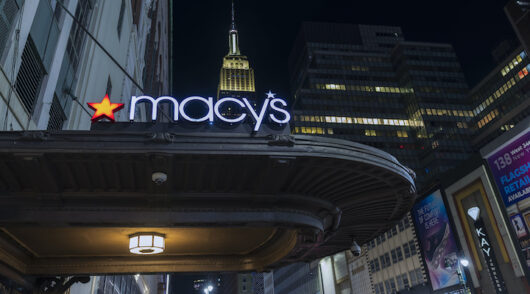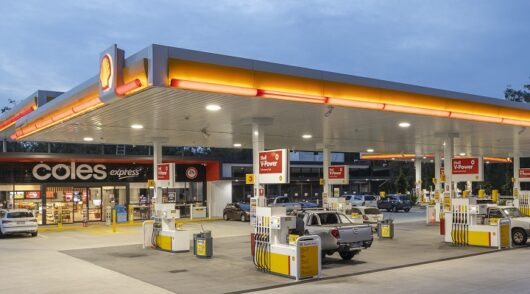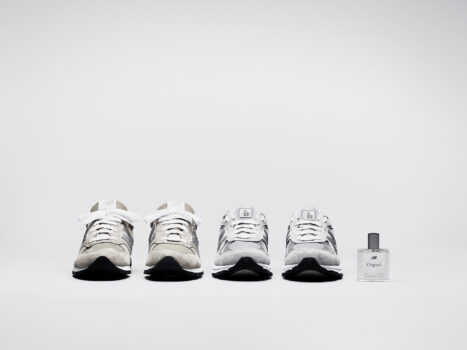 Breakfast may be the most important meal of the day, but for quick service restaurants (QSR) and food delivery companies like UberEats, Deliveroo, Foodora and Menulog, lunch comes a close second.
Breakfast may be the most important meal of the day, but for quick service restaurants (QSR) and food delivery companies like UberEats, Deliveroo, Foodora and Menulog, lunch comes a close second.
Recent months have seen the launch of new menu options and meal-ordering platforms aimed at the midday meal, as Australia’s busy workforce drives a growing ‘lunch opportunity’.
According to McCrindle Research, only four per cent of Australians bring lunch from home every day, leading the average employee to spend $18.52 on lunches, snacks and beverages during the workday every week.
Research also shows that the workday is getting busier, with 28 per cent of the labour force eating lunch ‘al desko’, rather than sitting down with co-workers or leaving the office.
QSR chains and food delivery companies alike have noted a rise in lunchtime orders, and some, spotting an underserved market, have expanded their offerings to include more convenient lunch options.
Retail Food Group (RFG) is one example. In December 2016, the company’s Pizza Capers brand introduced the Phat Boy Pizza Wrap, a new product consisting of a tortilla base, filled with a selection of toppings and run through a pizza oven.
Everything from Phat Boy’s price ($9.95 with a 450ml drink) to its form (wraps can be eaten one-handed) was specifically designed for lunchtime, which RFG’s own research shows is the most popular QSR offering, accounting for 43 per cent of purchases.
“We identified the lunch opportunity and we knew it wasn’t about trying to sell pizzas at lunchtime, it was about getting an offer that was actually relevant at lunchtime,” RFG’s QSR marketing manager Zoe Jacovou explained to IRW at the time of launch.
“It’s a very different pricing model but we feel like we are tapping into a whole new market segment that provides incremental sales opportunities.”
According to RFG, the Phat Boy Pizza Wrap has seen steady growth over the past seven months, while the company continues to up its lunch game.
Yesterday, RFG’s Crust Gourmet Pizza Bar launched an online portal aimed at corporate customers, making it easy for executive and personal assistants to cater for staff meetings and select from a range of delicious meals across three bundles: pizza, pizza and salad and pizza and tapas.
“We recognise that pizza is traditionally skewed towards the dinner occasion and going forward, we will place a key focus on changing this perception in the market through our innovative lunchtime offerings,” says RFG’s director of QSR, Sherree Halliwell.
Unlike Crust’s standard platform, the new corporate portal allows users to conveniently bundle together packages tailored to the needs of their guests.
“We understand that corporate catering needs to be quick and simple, and our online portal has been rigorously tested by our user experience team to reflect this, streamlining the key requirements of a corporate customer,” explains Halliwell.
Lunch, delivered
 Even QSR brands that don’t offer delivery themselves are able to tap into the growing consumer demand for convenient lunch options, thanks to the rise of food ordering and delivery companies like UberEats, Deliveroo, Foodora and Menulog.
Even QSR brands that don’t offer delivery themselves are able to tap into the growing consumer demand for convenient lunch options, thanks to the rise of food ordering and delivery companies like UberEats, Deliveroo, Foodora and Menulog.
These companies allow consumers to order food from thousands of partner restaurants – both standalone businesses and chains – and have drivers or cyclists deliver the meals to their doorstep.
Rory Murphy, commercial director of Menulog, tells IRW that while dinner is still the platform’s biggest business, lunchtime orders are growing.
“[We] have hundreds of restaurant partners available for lunchtime delivery, and this continues to grow. In the past six months, we’ve also seen a huge growth in major lunchtime players join the Menulog group, such as Sumo Salad, Subway and Oporto,” Murphy says.
Foodora’s head of marketing in Australia, Charlotte Rijkenberg, says the Berlin-based delivery company has also seen growth in lunch orders, as well as late lunches and afternoon snacks.
“Lunch isn’t a quick sandwich at the desk anymore – there is more appetite for healthy and quality food moments,” she says.
“We have great partners like Zumbo and Chatime on board, who can cater for those afternoon pick-me-ups and office celebrations, and we are continuously looking to expand our offer.”
Rijkenberg says Foodora is currently working on some new partnerships that target lunchtime specifically.
In October 2016, UK-based delivery platform Deliveroo launched a lunch-specific microsite called Deliveroo for Business. Similar to Crust’s new portal, the microsite targets corporate customers looking to order food at work.
“Employees no longer have to resort to boring cheese sarnies or canteen food – they’ve now got access to a range of amazing food from the best restaurants near their office,” Deliveroo’s country manager for Australia Levi Aron says.
Aron says the idea for the microsite, which is available in Sydney, Melbourne, Brisbane and Perth, was sparked by the increasing number of office workers having lunch delivered to their desks, rather than bringing food from home.
But according to Foodora’s Rijkenberg, the uptick in lunchtime deliveries doesn’t only have to do with a drop-off in brown paper bags being brought to work. Consumers have also grown more accustomed to ordering food at home.
“The convenience our customers experience at home, they now also want to experience at work at any time of the day,” she explains.
The cost of convenience
Brien McDonald, senior economist at NAB’s group economics, tells IRW that takeaway food – which includes sales placed through food delivery companies as well as ordering apps for brands like Domino’s Pizza Enterprises – is the fastest growing category in the bank’s monthly Online Retail Sales Index.
Annual growth of takeaway food sales in March of this year was over 20 per cent, which is down from the 34 per cent annual growth measured in December 2016, but still quite high. Meanwhile, 18-34-year-olds are most likely to order food for delivery.
“In our last report, we were saying that it’s worth 6.6 per cent of all online retail sales in Australia. The share of spend has grown quite rapidly, but what we’ve noticed now is that it’s starting to mature,” McDonald says.
Jordan Ponder, founder of Transform Health, a personal training business in Sydney, says the lunch market has become more saturated since he first started making lunchboxes for clients in 2013.
At one point, Ponder was making over 100 lunchboxes every day and sending them out via UberEats and Deliveroo, but today, he has scaled back to about 50, citing the time required to make individual meals as a challenge. Ponder says the rise of convenient lunch options hasn’t come without a cost.
“You can only outsource these really important things without them going too much in the wrong direction. From our point of view, people should ideally be menu planning and cooking their own food,” he tells IRW.
“We provide an option where you don’t have to do that. Now, you don’t even have to walk down the street to pick up your lunch. You can order it and it’s literally at your desk 20 minutes later.”





